Pancharama Kshetras | Divine 5 Pancharamalu List and Locations
Pancharama Kshetras/ Pancharama Temples are five ancient Lord Shiva temples which are scattered in different sites at Andhra Pradesh. All of them are important stations for the pilgrims who worshipfully follow Shiva. Each temple is associated with an event of Hindu mythology. The term “Pancharama” is a compound of two words. The word “Pancha” is an adjective meaning “five”. The word “Arama” is a noun, meaning “abode” or “resting place.” Together, these five Pancharamalu form a circuit that must be visited by one and all.
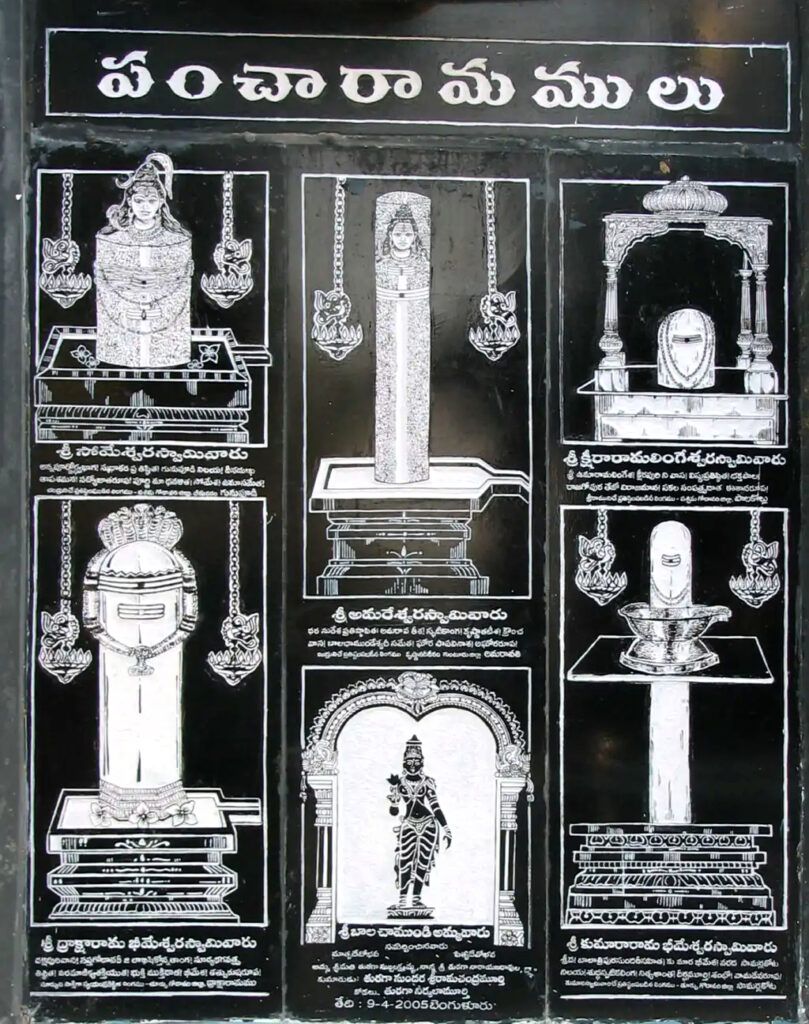
Pancharama temples legend: According to an interesting myth, the origin of the five Pancharamalu is an interesting one and is revolved by the discord between Lord Shiva’s sons, Kartikeya and Ganesha. The Shivalinga which Lord Shiva had taken the form of was split into five parts and each fell to a different place on account of the discord. And those places are where the Pancharama temples exist.
The Pancharama temples are of extreme architectural importance, as each of them is an example of an embodiment of one of the Dravidian architectural styles. They are also known for carvings and sculptures and their characteristic vimana, or towers.
Religious significance: The Pancharama temple is one among the most important temples of Shiva in India. The Shaivites pay their respects to these temples and believe it to be a highly auspicious act to visit all the five temples at one go in a single day.
Pancharama temples and cultural importance: Pancharama temples have been a long time pilgrimage center. In fact, they played a vital role in the development of Hindu culture and tradition.
Tourism aspects of Pancharama temples: Pancharama temples are a place visited by lots of people across the globe. The Pancharamalu reflects a glimpse of the rich history and culture of Andhra Pradesh.
Read More>> Badrinath Temple | Badrinarayan Temple
Contents
Pancharama Kshetras History:
Pancharama Kshetras are the five ancient temples where the divine existence of Lord Shiva is said to be here in Andhra Pradesh. Each temple has great history and mythology involved; hence, I’m telling you very briefly about it.
- Amararama (Amaravathi)
Deity: Amaralingeswara Swamy.
History: It is said to be built in the Satavahana dynasty. Here, the sage Vyasa performed penance and some history associated with the history related to the story of goddess Amaravati is found. - Ksheerarama (Narsapur)
God: Ksheerarama Lingeswara Swamy.
Legend: It was built during the time of Lord Rama and Sita during their banishment. According to the legend, a cow was utilized to cross over and to pour its milk at the lingam and due to that reason it was named as “Ksheerarama”. - Draksharama (Draksharamam)
God: Bhimeswara Swamy.
History: This temple has been built in the 10th century under Eastern Chalukya periods. The word “Draksha” means grape that refers to the fact that previously this was a land where grapes used to grow through vines. This is architectural beauty temple. - Somarama (Bhimavaram)
Lord: Someswara Swamy.
History: It is said to be built during the 9th century, and it is related to the legend where Lord Shiva appeared as moon or Soma to the devotees. The temple is important regarding the pilgrimage site based on the architectural designs of the Dravidians. - Jayashankara (Jammalamadugu)
God: Jayashankara Swamy.
History: This temple had its long history associated with a number of local legends. It is sacred for the devotees of Shiva and holds a special position in the historical series of centuries.
The five Pancharama Kshetras are as follows:
Amararama (Amaravati):

Amararama is located in Amaravati, close to the banks of Krishna River. The main temple here is Amaralingeswara, dedicated to Lord Shiva. So this is said to have been installed by Lord Indra to expiate his sin when he killed a demon called Tarakasura. Its most famous belief is that the Shiva Lingam had sprung up on its own; hence it is called Amararama.
Draksharama (Draksharamam):
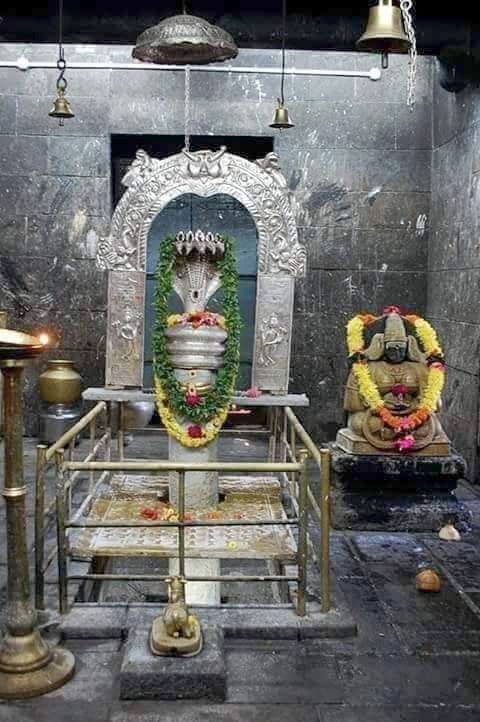
Draksharama Temple falls under the region of East Godavari district, Andhra Pradesh. It is one of the five Pancharamas and is sacred to Lord Shiva. The primary deity in the temple is Lord Bheemeshwara Swamy and this temple also comes to be known as Dakshina Kashi. It possesses a beautiful architectural background with some good carvings and accommodates a tall Shiva lingam. This shrine center is one of the favorite worship centers among the devotees of the Lord Shiva.
Read More>> Konark Sun Temple 13th Century Gem
Somarama (Bhimavaram):
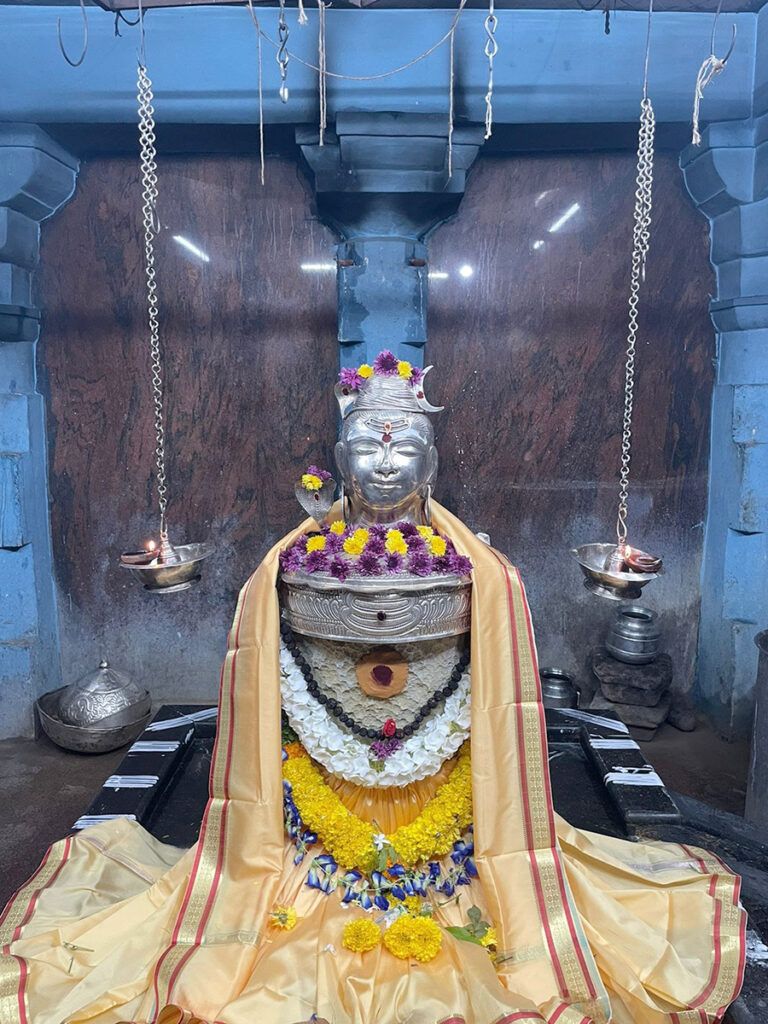
Somarama (Sri Bhimeswara Temple), Bhimavaram, West Godavari district. This temple is considered to be the temple of Someswara Swamy (Shiva). According to the mythology, this temple had connection with Chandra or Moon God. Chandra was cursed by his father-in-law Daksha due to which he lost all his glow and brightness. He prayed to Lord Shiva at this place so that he could get relief. It is said that Shiva had given him relief.
Ksheerarama (Palakollu):
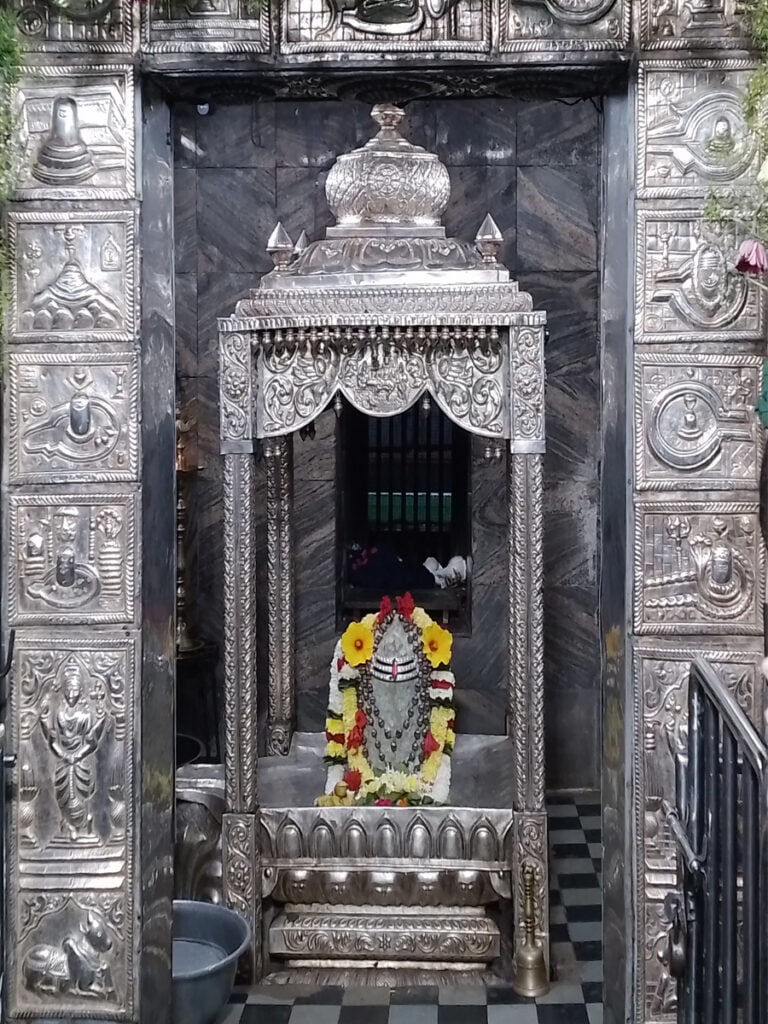
This temple is located in the city of Palakollu, which falls in West Godavari district. The presiding deity is Ksheera Ramalingeswara Swamy (Ksheerarama) who is Shiva. Here is the legend behind it. It is basically the tale of Ocean Churning, Samudra Manthan. While churning, it is believed that Devas and Asuras found Ksheera Sagara. They then prayed to Lord Shiva here, seeking his blessings and help to gain amrita.
Kumararama (Samarlakota):
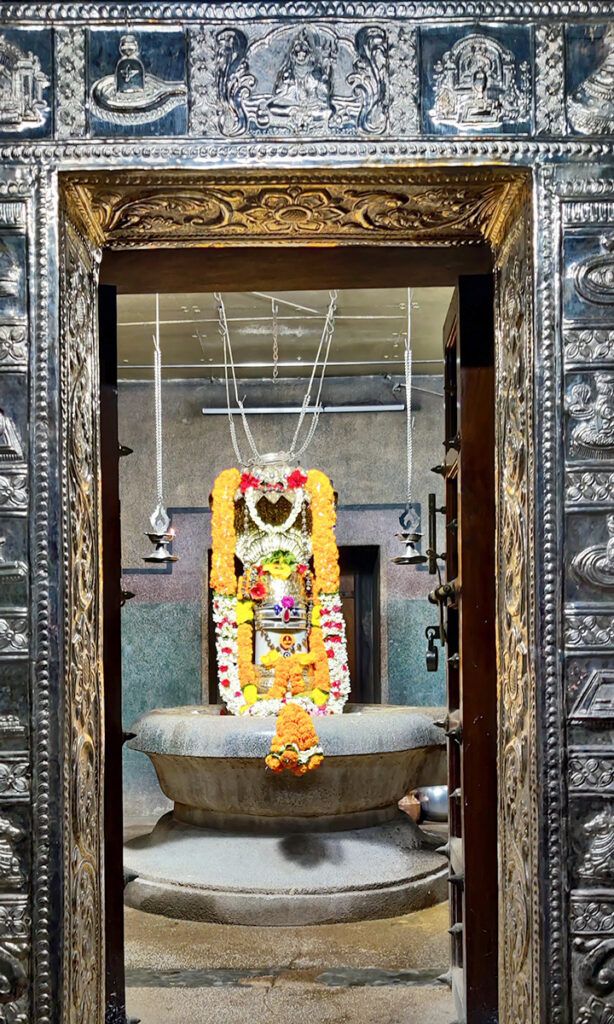
Kumararama is a Shiva Temple located in Samalkota, East Godavari district. It is said that the demon Tarakasura was terrorising the whole world; hence all the Gods approached Shiva for help. Shiva’s son Kumaraswamy-also known as Kartikeya-fought the demon at this very place and defeated him..
Read More>> Bakreshwar Temple | Mahishmardini Shaktipeeth West Bengal
Who is Tarakasura?
Tarakasura is one of the most vital demons in Hindu mythology. The epic has numerous links with the Holy One Lord Shiva and the divine battle against evil forces. The most talked about legend about Tarakasura is about his battle against Lord Shiva and later the birth of Lord Kartikeya, who is also known as Kumaraswamy or Murugan. As mythological narration states, Tarakasura was a very powerful demon who had received the boon of invincibility from Lord Brahma. He had proven almost unbreakable, but with his newly acquired powers, he began wreaking havoc on both the heavens and the Earth. He oppressed gods and men both and did pose a threat to the divine order. Having failed to subdue Tarakasura, the gods came before Lord Shiva and sought his auspicious presence. It was already foretold that a son produced from Shiva and Parvati alone could defeat the asura known as Tarakasura. However, an impediment arose: Lord Shiva was an ascetic, leading a secluded life away from worldly activities. On their request, Lord Shiva agreed to marry Parvati and then their union gave birth to Lord Kartikeya who also became popular as the god of war and commander of the divine armies, destined to conquer Tarakasura. Thus, there was a fierce battle between Lord Kartikeya and Tarakasura, where the god, with his divine power and wisdom, overpowered the demon and restored order again in the universe. There are many Hindu festivals of this victory of Lord Kartikeya, out of which Skanda Shasti is the most important one.
Legend of Pancharama Kshetras:
The Pancharama Kshetras of Andhra Pradesh legend is just one good story of faith and devotion combined with the elements of divine intervention. Once upon a time there lived a very powerful demon named Tarakasura, so well-built nobody, not even gods could defeat him. Due to the Shiva Lingam he used as ornament across his neck, nobody would be able to beat him in a battle.
One day the demon Tarakasura challenged Kartikeya for a duel and Kartikeya fought very hard but could not kill that demon. Finding his son in trouble, Lord Vishnu appeared before him and asked him to shatter the Shiva Lingam of that demon.
After the recommendation from Vishnu, Kartikeya hurled his Agneya Astra-a heavenly missile of fire-at the Shiva Lingam. It fragmented into five pieces and fell at a different location in Andhra Pradesh. The temples are known as Pancharama Kshetras and are considered one of India’s most revered Shiva temples.
The legend of Pancharama Kshetras has explained how faith and devotion are enough to “wipe out anything in this world”. It teaches even the mightiest of demons could be wiped away with the help of divine.
They have a great cultural and heritage value beyond their religious values. Pancharamalu constitutes a storehouse of architecture and sculptures. They have always played significant roles in Hinduism in Andhra Pradesh.
How was Pancharamalu formed?
These Pancharamalu temples are located in the state of Andhra Pradesh, India. According to legend, these five temples were made from a single Shiva Lingam which was broken into five pieces by the Lord. The story behind this is as follows:
Once upon a time, there was a mighty demon king named Tarakasura, who had a Shiva Lingam. He was granted power and victoriância with that Shiva Lingam which made him invincible as no one was successful in defeating him in the fight due to that divine protection.
The deities, led by the principal god Lord Indra, approached young warrior Lord Kumara Swamy, who was known for his valor and supernatural powers, to challenge the demon king Tarakasura. Kumara Swamy accepted the challenge and fought a strong battle with the demon king.
Kumara Swamy wrestled with the powerful Sakthi Ayudha weapon that looked like a trident. He threw the powerful blow at Tarakasura. This resulted in such a jolt that it shattered the Shiva Lingam into five pieces. However, to everybody’s surprise and unhappiness, the Shiva Linga pieces started assembling themselves as if they would bestow the invincibility power back upon Tarakasura.
He, therefore, advised Kumara Swamy to use Agneasthra, the fire weapon, to burn the five pieces of the Shiva Lingam to ashes so that they may not assemble again to form the whole part and thus destroy Shiva Lingam completely. Kumara Swamy followed the instruction. The pieces of Shiva Lingam were burnt by Agneasthra so completely that they became unable to assemble again.
Pancharama Kshetras Route Map:
Let’s Start from Capital City, Amaravati (Amararama)
First Visit the Amaralingeswara Swamy temple, have a holy bath in Krishna River water and then Travel to Draksharamam (Draksharama)
Distance: ~120 km from Amaravati.
Visit Bhimeswara Swamy temple.
Head to Ksheerarama (Narsapur)
Distance: ~90 km from Draksharamam.
Visit Ksheerarama Lingeswara Swamy temple.
Proceed to Somarama (Bhimavaram)
Distance: ~40 km from Narsapur.
Visit Someswara Swamy temple.
Finish at Jayashankara (Jammalamadugu)
Distance: ~150 km from Bhimavaram.
Visit Jayashankara Swamy temple.
Pancharama temples distance Distance:
The entire circuit is approx. 500 km, one can complete this circuit within a day if he starts at Brahma Muhurtham.

One Comment